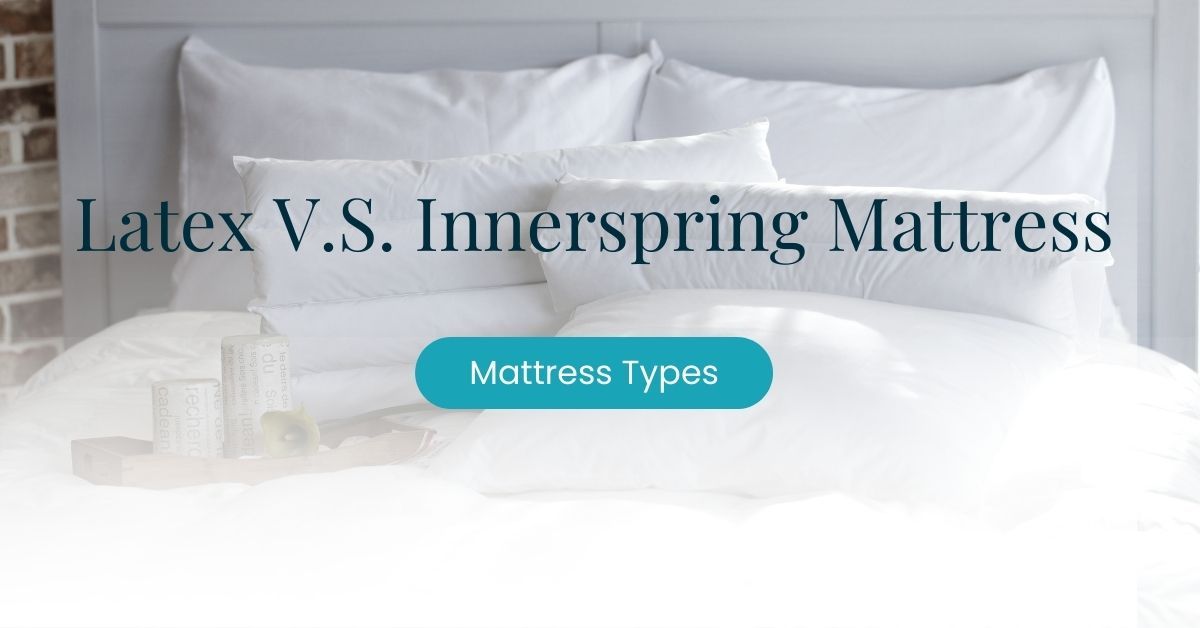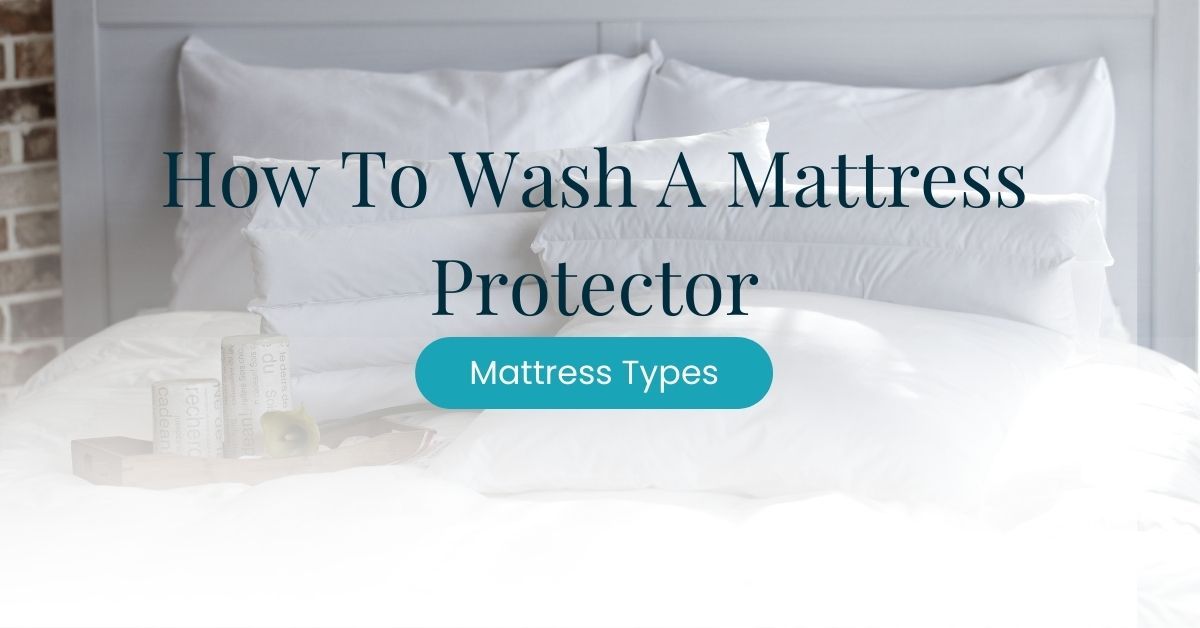If you’ve already trimmed down your next mattress purchase to just latex and innerspring, how should you choose one between the other? Should you base your decision on price, features, comfort, or perhaps all 3?
Latex and innerspring mattresses both have good and bad qualities. And yes, we know it might be hard to balance the best of both worlds in just one bed frame. But don’t fret just yet because we’re here to help you out.
Deciding to buy a mattress requires knowledge of the products you’re choosing from since you’ll use the mattress for many years. So, we cover every little bit of detail you’d need as we compare latex and innerspring together. Read on!
What Are Latex Mattresses?
Latex mattresses are mattresses primarily made from the sap of rubber trees. Some latex mattresses can be synthetic, and some may combine natural and synthetic materials together to create a blended latex model.
There are three primary types of latex mattresses, namely: natural, blended, and synthetic. Natural latex is the most eco-friendly of the three as it doesn’t use petrochemicals found in blended and synthetic models.
Talalay And Dunlop: What’s The Difference?
Natural latex is made through one of two latex manufacturing processes named Dunlop and Talalay. The Dunlop process is cheaper, quicker, and easier, resulting in a firm and supportive latex perfect for mattress core support. While Talalay is pricier, longer, and harder to do, but results in a soft and supportive latex.
This type of mattress is known for its durability, especially in all-natural latex, as it can reach 15-20 years of lifespan. Another known feature of latex mattresses is their supportive and responsive feel mimicking spring-based mattresses to a certain degree.
Advantages and Disadvantages of Latex Mattress
Lets talk about the advantages of latex mattresses as well as its disadvantages:
Advantages
- Durability. Latex mattresses, with emphasis on all-natural latex, are known for their incredible durability. Depending on care and usage habits, they can last for 15-20 years or more.
- Pressure Support. Latex has good pressure relief and support as it’s neither too soft nor too firm. Some models lean toward softer or firmer, which is something to consider if you’re lighter or heavier than the average weight.
- Breathability. Although foam-based, latex mattresses have pockets that allow for airflow, making you sleep cool.
- Hypoallergenic. Allergy and asthma sufferers who have dust mites, moulds, and pollen allergic reactions will have no problems sleeping on a latex mattress.
- Eco-Friendly. All-natural latex models don’t use harsh chemicals and often use organic materials for the base of the mattress.
Disadvantages
- High Price Point. Latex mattresses are known to be notoriously expensive as compared to other common mattress types.
- Weight. They are big, heavy, and often difficult to work around and set up.
- Off-Gassing. Blended and synthetic models emit VOCs for a few days up to a week. Natural models give off a rubbery scent for a few days or so.
What Are Innerspring Mattresses?
Innerspring and pocket spring mattresses are mattresses with metal coils and springs inside. These coils are welded together to form one compacted coil that responds to the weight and pressure of the user as compared to pocket sprung mattresses that has individually-pocketed coils.
As such, innerspring is famous for its firm and responsive feel and support, thanks to the coils.
The coils commonly used in an innerspring mattress are Bonnell, offset, or continuous coils with an hourglass shape.
Coil types vary by model and manufacturer, as different coil types have different feels. For example, the offset coil is the most expensive of the three and, as such, offers more support, contouring, and less motion transfer.
The airflow in this mattress is good, too, as there is enough room inside the interior for air to move in, and the heat dissipates, as compared to foam-based mattresses, where body heat is absorbed and retained inside the foam.
Advantages and Disadvantages of Innerspring Mattress
Now that we’ve discussed what innerspring mattresses are, now we’ll discuss what are the benefits and drawbacks of innersprings.
Advantages
- Affordability. Innerspring are among the cheapest mattresses you can find in stores and factories worldwide.
- Ventilation and Airflow. Since these mattresses are partially hollow inside, airflow and ventilation are good enough to help you don’t sweat during sleep.
- Lightweight. As opposed to foam-based mattresses, the partially hollow interior of this mattress makes it lighter, easy to set up, and easy to work around.
- User Support. The compacted coils of an innerspring give the user an ample amount of weight support.
- Durability. Quality models can last for up to 7 years or more, depending on user care and usage habits.
Disadvantages
- Sagging. Signs of sagging in innersprings include middle indentations after several years of heavy use such as working in bed, jumping in bed, and allowing multiple persons to use the bed simultaneously.
- High Motion Transfer. Interconnected and compacted coils mean one coil moves, and other coils around it move too. Not suitable for couples as tiny movements may wake up their partner.
- Poor Pressure Support. Pressure points are not supported properly and can lead to aches and pains the morning you wake up.
- Durability. Innersprings flunk in durability ratings when pitted against latex mattresses since latex is more durable and versatile.
- Hollow Space. The partially hollow inside of an innerspring provides a suitable environment for dust mites to thrive.
- Possible Rupture. Although rare, innerspring coils can rupture the mattress surface and may prove to be dangerous. This can happen when the coils are extensively used without proper maintenance.
Innerspring and Latex: Feature By Feature
| Feature | Latex Mattress | Innerspring Mattress |
| Durability | Natural latex mattresses can last for 15-20 years or more, while it’s 6-8 years for synthetic and combined latex. | Innersprings can last for 6-7 years or more, depending on usage habits and care. |
| Support | Some people also love the body contouring of latex mattresses. | Some people love an innerspring mattress’s springy and responsive feel, especially solo sleepers |
| Pressure Relief | Latex contours to the body and support pressure points, although not on par with memory foam. | Innersprings hardly contour to the body as it bounces back, making pressure points tensed instead of eased. |
| Pricing | latex is considered the priciest mattress type around | Innersprings are one of the cheapest mattress types around and worldwide. |
| Eco-Friendliness | Latex uses natural, synthetic, or combined materials. An all-natural model is the most eco-friendly. | Innersprings use metal coils, which a metal refinery produces. Metal refineries are notorious for their massive carbon footprints. |
| Verdict | Better | Average |






